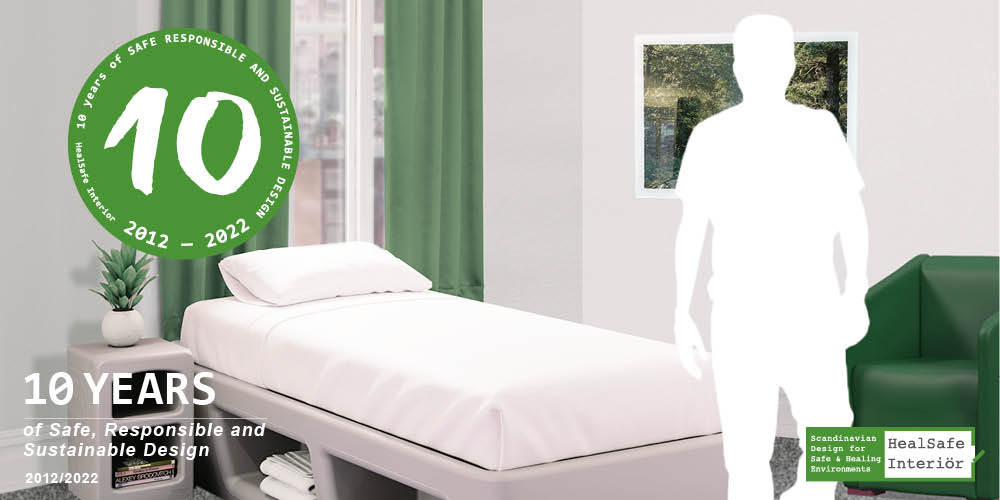At HealSafe Interior, we repeatedly talk about “Healing environments”. The concept is central to our business and our goals. Through our interiors and products, we want to contribute to environments where people can feel better, physically and mentally. But we also want to spread knowledge about this important concept.
That is why HEALING ENVIRONMENTS is number 2 of the concepts – 10 in all – that we will highlight during our anniversary year.
———————————————————
HEALING ENVIRONMENTS – What does it mean?
Imagine a room without the ordinary interior products; no paintings, no plants, no curtains or other textiles. Would not a room like that be experienced by most of us as sterile and inhospitable, not least for a person who already is affected by ill-being.
In extra challenging environments, for instance, psychiatric hospitals, youth homes and prisons, there are non-negotiable and high safety requirements. In order to meet them, objects that constitute, or may constitute risk, are often removed. Unfortunately, such a reduced and bare environment will affect people in a negative way. It is fully understandable that it is a challenge for care providers to find out that there actually are products that combine a safe environment with the functions that are normally found in a people’s everyday life.
It is important to remember that safe and well-designed environments are important for patients ‘/clients’ well-being and recovery, which in turn promotes healing.
A good night’s rest with high sleep quality leads to both reduced stress and in turn lower risk for aggression. We all know that poor sleep affects our well-being, mood and stress levels. Therefore, it is fundamental that there are beds and mattresses that meet the high demands from the facility; a robust and durable bed that lacks hiding spaces and ligature points, is easy to clean, and a mattress that is both safe and comfortable, e.g. with memory foam, all this is as well an important aspect for safe and healing environments.
Other aspects that are important for healing is the quality of light and noise reduction, as well as the possibility for patient/client autonomy. Curtains are for instance, something that will contribute, but are sometimes rejected for safety reasons. This is unfortunate since curtains contribute with colour and design, but above all they provide an opportunity to independently control daylight and exterior night lighting. The sound-absorbing properties of curtains contribute to an improved healing environment. All this together is important for well-being, rest and recovery. Also, in cases where a room for instance, faces a courtyard where others pass it is important to be able to draw a curtain to protect the private sphere.
Another example that we believe is worth mentioning is “Nature”. Today we know that nature motifs have a stress-reducing effect. Evidence-based research shows that nature motifs, not only in reality but also in images, are favorable for healing environments *. It is not always possible to offer a view of nature or park area and in these cases wall art that meets the safety requirements can be a positive alternative.
A safe and secure work environment is an increasingly important safety aspect for the staff in these facilities. A safe work environment creates well-being, which may also lead to reduced staff turnover, which in turn creates safety for both patients/clients as well as for the staff. A well-thought-through interior also supports the staff in their care giving. Nevertheless, safety product and furniture can never replace staff expertise in assessing the risk for self harm of each patient/client.
Our mission is to offer interior products that contribute as much as possible to a safe, self-harm preventive and healing environment that is based on the individual’s and the facilities’` genuine needs, evidence-based design and a humanistic approach. All to create environments enabling better wellbeing for patients and staff.
* View through a window may influence recovery from surgery. Ulrich, R. S (1984) Science new series, 224(4647), 420-421. Nanda et.al, 2009. Neuroesthetics and Healthcare Design. HERD vol 2 WINTER (2000)Effect of visual art on patient anxiety and agitationin a mental health facility and implications for the business case. Nanda, U., Journal of Psychiatric and Mental Health Nursing,, 2011(189: p. 386-393.
———————————————————
Download text in Swedish – LINK
Download text in English – LINK
READ MORE:



